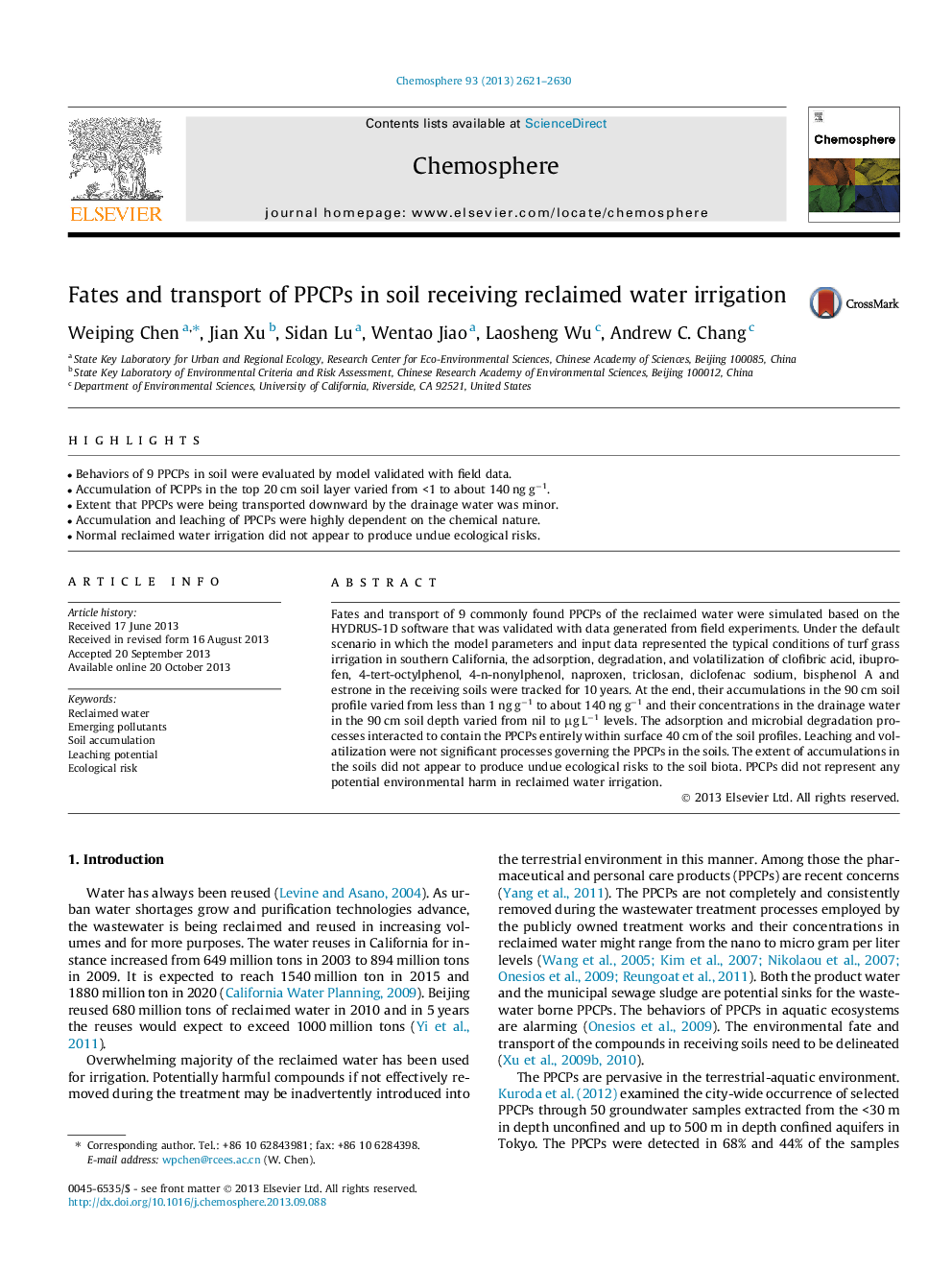| Article ID | Journal | Published Year | Pages | File Type |
|---|---|---|---|---|
| 6309679 | Chemosphere | 2013 | 10 Pages |
Abstract
Fates and transport of 9 commonly found PPCPs of the reclaimed water were simulated based on the HYDRUS-1D software that was validated with data generated from field experiments. Under the default scenario in which the model parameters and input data represented the typical conditions of turf grass irrigation in southern California, the adsorption, degradation, and volatilization of clofibric acid, ibuprofen, 4-tert-octylphenol, 4-n-nonylphenol, naproxen, triclosan, diclofenac sodium, bisphenol A and estrone in the receiving soils were tracked for 10 years. At the end, their accumulations in the 90 cm soil profile varied from less than 1 ng gâ1 to about 140 ng gâ1 and their concentrations in the drainage water in the 90 cm soil depth varied from nil to μg Lâ1 levels. The adsorption and microbial degradation processes interacted to contain the PPCPs entirely within surface 40 cm of the soil profiles. Leaching and volatilization were not significant processes governing the PPCPs in the soils. The extent of accumulations in the soils did not appear to produce undue ecological risks to the soil biota. PPCPs did not represent any potential environmental harm in reclaimed water irrigation.
Related Topics
Life Sciences
Environmental Science
Environmental Chemistry
Authors
Weiping Chen, Jian Xu, Sidan Lu, Wentao Jiao, Laosheng Wu, Andrew C. Chang,
